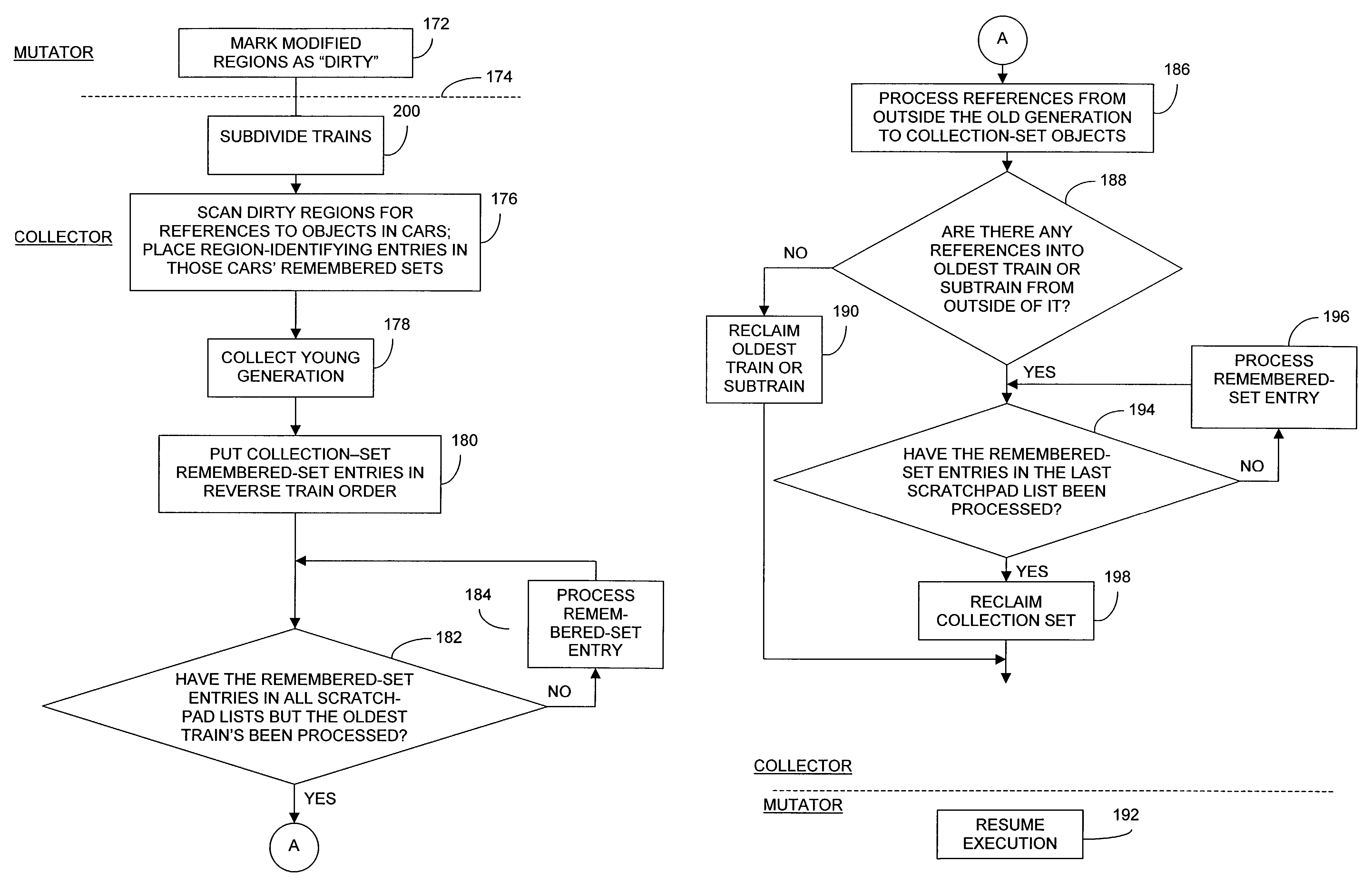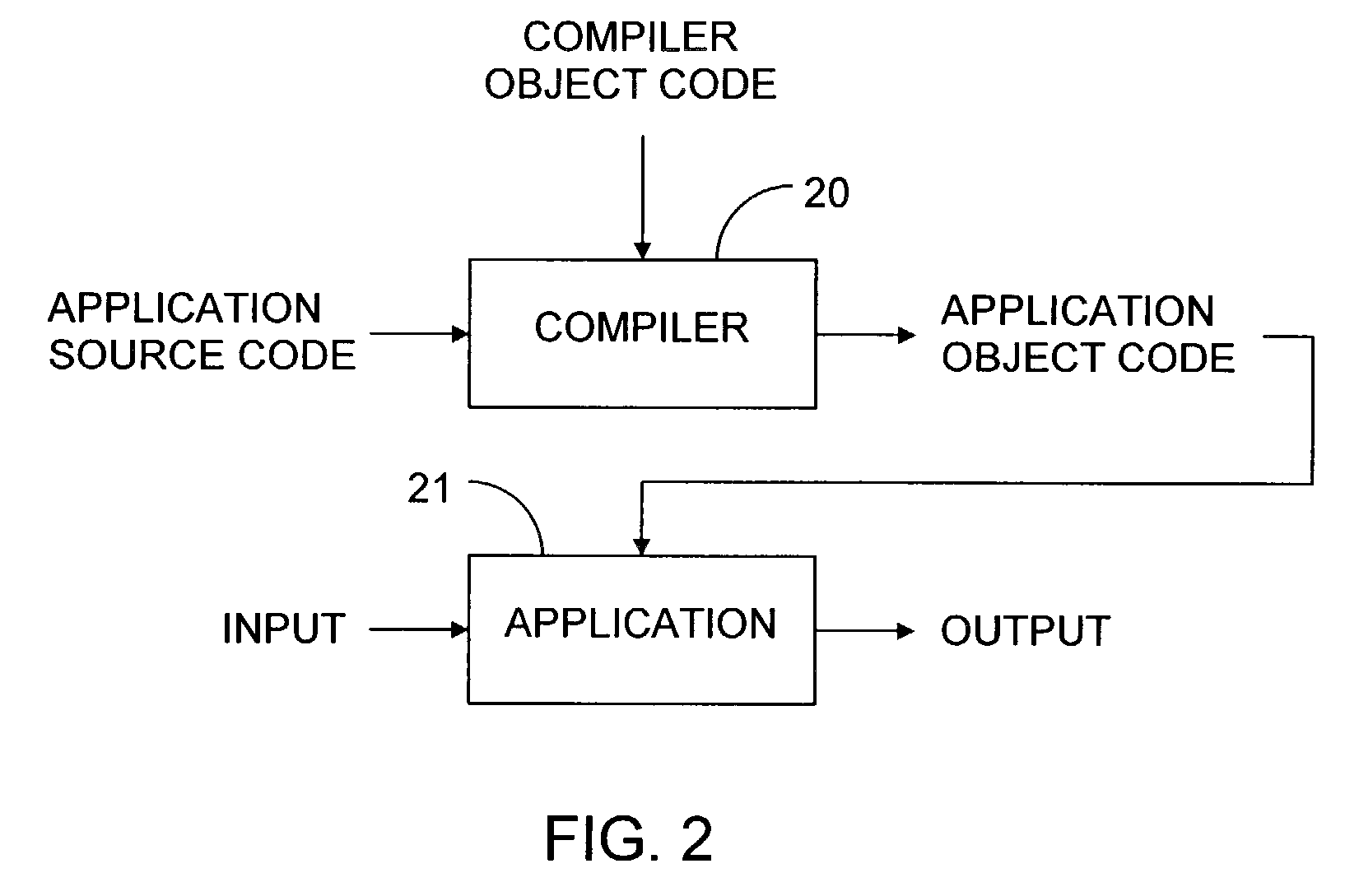Efficiently supporting the existence of long trains in a generation managed by the train algorithm
a technology of train algorithm and long train, applied in the field of memory management, can solve the problems of increasing the difficulty of restricting storage requirements to the available memory space, and the difficulty of allocating memory to data objects, so as to reduce the amount of evacuation work, reduce floating garbage, and improve the effect of evacuation policy
- Summary
- Abstract
- Description
- Claims
- Application Information
AI Technical Summary
Benefits of technology
Problems solved by technology
Method used
Image
Examples
Embodiment Construction
[0108]The present invention's teachings of dividing trains into subtrains can be practiced in essentially any implementation of the train algorithm. It can be employed in a train-algorithm-based collector that employs an operational sequence essentially the same as that described above in connection with FIGS. 8-11, for instance. But it can also be practiced in train-algorithm-based collectors that, for instance, spread a collection increment over a plurality of collection intervals instead of concentrating the whole collection increment in a single interval. In fact, as was mentioned above, train-algorithm-based collectors can perform some or all of the collection concurrently with mutator operation, and the present invention's teachings will be applicable to such collectors, too.
[0109]Even in collectors that concentrate an entire collection increment in a single collection interval, moreover, the operational sequence can differ significantly from that depicted in those drawings. F...
PUM
 Login to View More
Login to View More Abstract
Description
Claims
Application Information
 Login to View More
Login to View More - R&D
- Intellectual Property
- Life Sciences
- Materials
- Tech Scout
- Unparalleled Data Quality
- Higher Quality Content
- 60% Fewer Hallucinations
Browse by: Latest US Patents, China's latest patents, Technical Efficacy Thesaurus, Application Domain, Technology Topic, Popular Technical Reports.
© 2025 PatSnap. All rights reserved.Legal|Privacy policy|Modern Slavery Act Transparency Statement|Sitemap|About US| Contact US: help@patsnap.com



